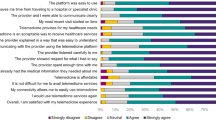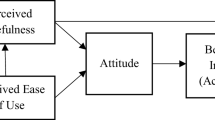Abstract
We present the results of the user studies of the CareMe prototype telecare service for supporting older adults with remote telecare services. The CareMe solution targets older adults who are capable of living independently and outside of a dedicated medical institution or a nursing home, but require occasional medical attention, and formal or informal care. The studies were conducted between November 2013 and March 2014 and followed the participatory design approach. The research questions focused on understanding the difference in the participatory design approach when older adults use paper prototypes vs interactive prototypes, and the difference when older adults use interactive prototypes with poor interface design vs interactive prototypes with rich interface design. In total, 45 older adults living in Slovenia participated in the field trial. They were retired, 32 of whom were nursing home residents and 13 were living independently at home. The study sample’s age distribution was between 64 and 91 years. The analysis of the filed trial results indicated the importance of the factors that influence users’ decision about how and when they use new technology, i.e., the perceived usefulness and the perceived ease-of-use. Main insights gained from the studies show, that it is very difficult to keep older people focused on the topics of discussion and that they have often difficulties to clearly present/express their ideas. Furthermore, abstract concepts, such as paper only prototypes proved to be challenging to cope with, whereas using real applications and services when trying out scenarios using interactive prototypes provided much better experience and feedback.




Similar content being viewed by others
References
Berhold, J., and Thomas, S., Participatory research methods: A methodological approach in motion. Forum Qual. Sozialforsch. / Forum: Qual. Soc. Res. 13(1):Art. 30, 2012.
Foth, M., and Axup, J., Participatory design and action research: Identical twins or synergetic pair? Participatory Design Conference (PDC), Trento, Italy, 2006.
Sanders, E. B.-N., From user-centered to participatory design approaches. In: Frascara, J. (Ed.), Design and the Social Sciences. Taylor & Francis Books Limited, Abington, 2002.
Osman, A., Baharin, H., Ismail, H. M., and Jusoff, K., Paper prototyping as a rapid participatory design technique. Comput. Inform. Sci. 2(3):53, 2009.
Snyder, C., Paper prototyping: the fast and easy way to design and refine user interfaces. Morgan Kauffman Publishers, San Francisco, 2003.
Blackler, A., Applications of high and low fidelity prototypes in researching intuitive interaction. In: Undisciplined! Design Research Society Conference 2008, Sheffield Hallam University, Sheffield, UK, 16–19 July 2008, 2009.
Banerjee, A., What a prototype is (and Is Not) UXMagazine, Article No :1345. Retrieved: https://uxmag.com/articles/what-a-prototype-is-and-is-not, 2014.
Sauer, J., Franke, H., and Ruettinger, B., Designing interactive consumer products: Utility of paper prototypes and effectiveness of enhanced control labelling. Appl. Ergon. 39:71–85, 2008.
Kervina, D., Pustišek, M., Kos, A., Integracija osebnih zdravstvenih sistemov v inteligentna bivalna okolja = Integration of personal health systems into intelligent living environments. Bilten, ISSN 1318–2927, 2011, letn. 27, št. 2, str. 95–111, ilustr., doi:10.2478/v10221-011-0011-6, 2011.
Lindsay, S., Jackson, D., Schofield, G. et al., Engaging older people using participatory design. CHI 2012, Austin, pp. 1199–1208. ACM., 2012.
Hawthorn, D., Interface design and engagement with older people. Behav. Inform. Technol. 26(4):333–341, 2007.
Stojmenova, E., Imperl, B., Žohar, T., and Dinevski, D., Adapted user-centered design: A strategy for the higher user acceptance of innovative e-health services. Futur. Internet 4(3):776–787, 2012.
Acknowledgments
The study was partially funded by the Slovenian Ministry of Education, Science and Sport within the public call Research Voucher through the “Optimal user experience implementation for telemedicine solutions for the elderly” project. The authors would like to thank the project coordinator, prof. Sašo Tomažič and our project partners from Telekom Slovenia. We would also like to thank both nursing homes and especially participants that took part in the study.
Author information
Authors and Affiliations
Corresponding author
Additional information
This article is part of the Topical Collection on Systems-Level Quality Improvement
Rights and permissions
About this article
Cite this article
Duh, E.S., Guna, J., Pogačnik, M. et al. Applications of Paper and Interactive Prototypes in Designing Telecare Services for Older Adults. J Med Syst 40, 92 (2016). https://doi.org/10.1007/s10916-016-0463-z
Received:
Accepted:
Published:
DOI: https://doi.org/10.1007/s10916-016-0463-z




